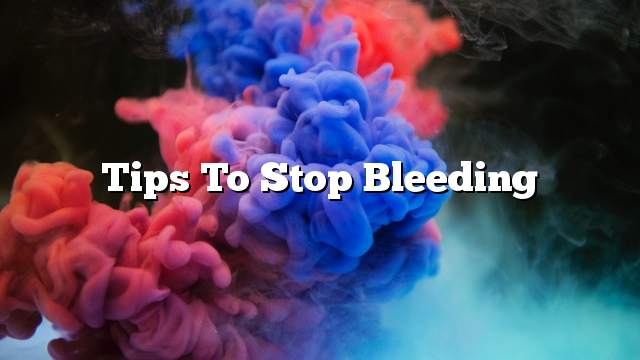Bleeding
The oxygen travels to all the organs of the body through the blood, without blood there is no life for the human, and blood passes through the blood vessels under which the arteries, veins and veins and micro vessels, if the human being bleeding must be accelerated to stop directly because the lack of blood means the decrease of oxygen reaching the body causing In which the person is at risk of damage to the heart or brain.
Bleeding is the second most dangerous type of bleeding, because the blood in the arteries comes from the heart carrying oxygen to transport it to the rest of the body. The body, since the arteries are closest to the heart, the blood pressure is high, making the bleeding strong and the amount of blood lost is significant.
Stop bleeding
- The person should be lying flat on the ground so that he does not lose consciousness and keep up his ability to breathe. People should not gather around him because he needs breathing, and we have to make sure the lungs are functioning normally.
- If the medic is able to wear the gloves, it is better, because the blood of the patient carries many germs that may cause diseases to the medic.
- You should use a piece of cloth that does not stick to the blood to place it above the bleeding site. It is better to use bandages made of gauze with a cloth over it and press the place of bleeding to stop it, and bleeding needs less than five minutes to stop.
- When the cloth is filled with blood, put another piece over it and keep pressing.
- It is best to put the injured person so that the place of bleeding is higher than the body, and this of course according to the place of bleeding, but if bleeding accompanied by fractures in the member should not move the affected member.
- After making sure that the bleeding has stopped, the place of bleeding must be connected until the ambulance arrives.
- Try to stop the bleeding quickly, the longer the bleeding, the greater the risk of the injured, and must be brought to the ambulance immediately to provide the oxygen.
- In all cases, bleeding should not be underestimated, but these instructions were intended to aid the wounded until the arrival of the ambulance and the transfer of the injured to the hospital.
- The work of all vital organs of the injured should be followed in the first aid, and these organs are mentioned in the lungs as well as to ensure the functioning of the heart.
- For ear hemorrhage, it is another condition that is not treated with first aid, especially when the person is exposed to an accident; the loss of the ear means a fracture of the skull and the patient must be immediately transferred to the hospital.
